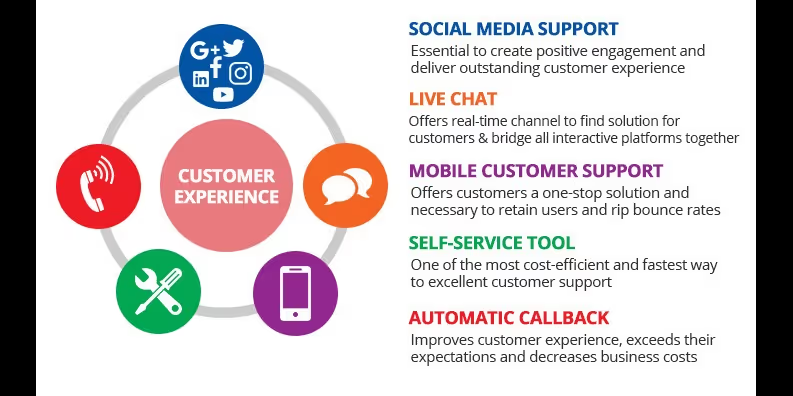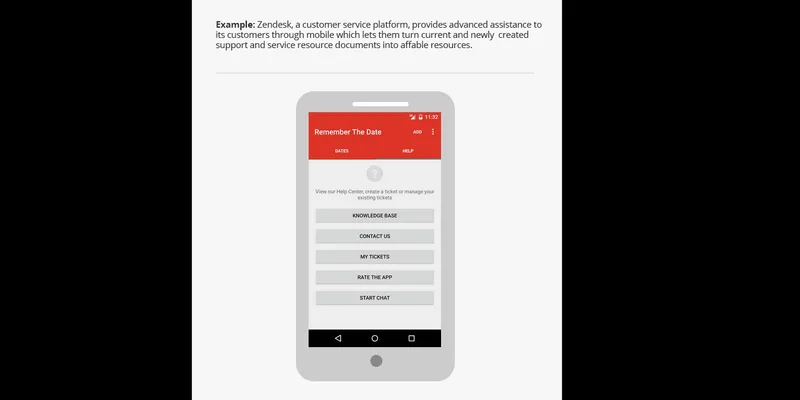

5 tools to make customers fall in love with your business
Customer support is hard. The right support tools make it easy.
Do you remember the last time you had a bad experience with a service or a product?

Maybe the company failed to live up to your expectations; perhaps they did not answer your concerns.
Maybe they did not deliver as promised or gave you the same old ‘run-around’ during your calls.
All the problems above revolve around only one thing – awful customer service! And such a service is caused by a dearth of customer focus.
Customer service is the lifeline of any business and an excellent service creates loyal customers for life. No matter how good your service is or how brilliant your staff is, one of the things customers remember is the direct interaction they have with the company.
According to a survey report by Gartner, more than two-thirds companies compete on the basis of customer experience and is expected to increase by 81% by 2019.
Despite the importance provided to customer experience, it remains a challenge for many. Most companies struggle to connect external components affecting consumer experience with regular internal developments and methods which determine the experience. This struggle results in uncertainty, inevitably obstructing the implementation of simple measures which can offer excellent customer experience.
However, businesses can easily avoid such challenges with simple changes in perspective. By leveraging the benefits of technological advancements, companies can easily satisfy their customer base and improve business efficiency.
The best strategy to improve customer experience begins with the right tools. Protect yourself with these 5 essential tools.
Here is the graphical representation of important tools you can use:

Social Media Support
Social media is responsibility of the marketing department, isn’t it? Not anymore. According to a survey by Sprout Social Index, 90% of customers use social media to communicate with the company. Not just that, over 34% said that they prefer social media to email or phone.
Customer service has now changed from telephone to Twitter, from in-person to the Internet and from fax/email to Facebook. So, it’s no longer a question if a company needs to listen to its customers on social media. It’s a question of how you listen and how well you respond.
While previously word of mouth potential was limited to a small group of friends and family, social media platforms like Twitter, Facebook and YouTube have spread out to the entire world. Customers are using social media differently and companies adjusting to it will immediately see positive results.
While providing customer service through social media channels can be challenging – more than one million people check tweets related to customer service each week and around 80% of them are negative. However, this should be considered as an opportunity to improve your customer retention and loyalty.
2. Live Chat
Handling customer todays can be a bit challenging. They want their questions answered online, until they want to interact to a human. Customers, not only expect the right answer but a lightning-fast answer.
Best of both world, personal and professional, Live Chat, is one of the most useful tools to improve customer service. Not only it provides the customers real-time human interaction but can also be an effective way to keep them happy. As most companies face cash crisis nowadays and cannot afford to have a bigger customer support department, live chat tool can do wonders.
Live chat has been around from a long time, but it is only recently that companies discovered its profound effect on conversion rates. According to Forrestor research, live chat has the maximum satisfaction ratings with 73% satisfaction, compared to 61% for mail and 44% for mobile.
Customers always look for efficiency. In fact, the sooner their issues are resolved, the higher is the satisfaction level. Live chat gives agents a chance to find the answer the questions at the moment of check-out and offers flexibility to connect with customer 24*7 worldwide – no need of international phone numbers.
3. Mobile Customer Support
Everyone has a mobile device and usually it is the first think they turn to when they need information or have a problem. But how is the experience of customers when they turn to mobile devices and ask for help? In most cases, it is not a good experience. While apps are still dominating the mobile revolution, many companies don’t provide in-app customer support, yet.
Customers need and want information. And they also want an easy way to get that information. With instant and handy help desk within mobile app, businesses can expect positive results and improved ratings, and turn customers into loyal and engaged customers.
Instead of revamping your existing mobile web design, you can go for platforms having specific mobile support abilities.
Example: Zendesk, a customer service platform, provides advanced assistance to its customers through mobile which lets them turn current and newly created support and service resource documents into affable resources.

It was predicted by Gartner that mobile devices will improve customer experience and companies must improve their customer service via mobile devices and apps.
Self-Service Tools
It’s 2018. Long gone are the days when email or phone were the only options to reach customer support team. Many customers now prefer self-service over human interaction. Self-service is no longer a nice-to-have tool but is a necessity for businesses to provide good customer support. It should be an integral and well-thought component of your company.
Customers should always be able to reach you even if your chat or phone line are offline. This can be done by creating self-service pages such as FAQ, knowledgebase, IVR phone systems and online discussion forums packed with essential information and queries that customers may have.
Not only would it save customer’s time by letting them resolve their own concerns but would also allow them to get to know about your services.
Automatic Callback
Time is a finite resource and customers hate it when they are put on hold for long period of time. By the time an agent comes on call, customers are already annoyed by having to listen to your musical track for the tenth time.
Automatic callback is a great option to improve customer service. You can put this widget on your website and request a callback with just a click of a button, that says ‘Call Me’.
Callback feature lets users enter their phone number for an agent to call them back without waiting for long time in service queue. This way, users can go about their lives as usual. In fact, it would be even better if you allow them to select a convenient time for a callback through a simple form on the website.
And this is just a beginning, customizable callback can have a huge impact on customer experience management.







